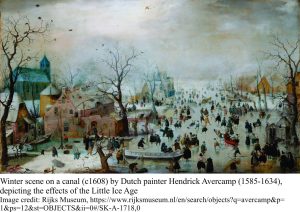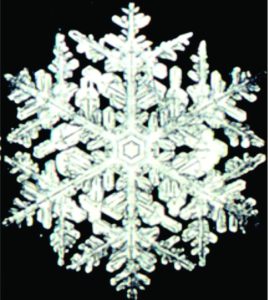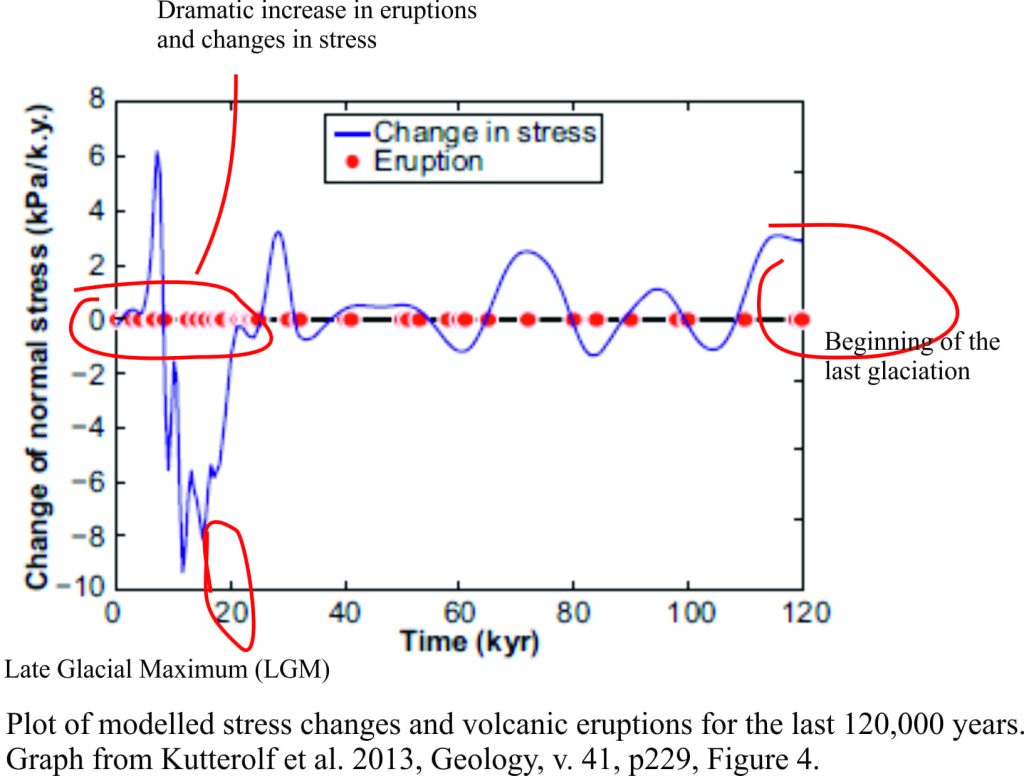Is there a relationship between volcanism and glaciation?
It is almost a truism that volcanic eruptions influence climate. Cold winters and even failed crops, particularly in the northern hemisphere, followed on the heels the Tambora, Krakatoa, and Pinatubo eruptions. But these climate aberrations were relatively short-lived, counted in years; the stratospheric aerosols and fine volcanic ash that reflect solar radiation back into space, eventually succumb to gravity and fall to earth. Eruptions of this kind do not result in long-lived, or permanent changes; they are temporary blips on an evolving earth and an evolving climate.
There have been stupendous volcanic outbursts in the more distant geological past, that have wreaked havoc on the global climate and threatened life itself. One such event was the eruption of the Siberian Traps, 250 million years ago, an outpouring of lava, volcanic ash, and gas that lasted almost one million years. Individual lava flows, in a single outpouring, produced upwards of 1500-2000 cubic kilometres of basalt. The cumulative volume of lava and ash would have been sufficient to cover all western Europe or USA in a layer more than a kilometre thick. The Siberian event is strongly implicated as the cause of mass extinctions at the end of the Permian Period, commonly referred to as The Great Dying; it was an event of truly global proportions. Events like this are orders of magnitude greater than the kinds of volcanic activity recorded over the last few thousand years.
So, my cliched introduction is true – to an extent. But how about turning this statement on its head; the excesses of a changing climate can influence volcanism. The possible links between global climate change, volcanism, and the carbon cycle have been argued for decades. First, we need to establish some time scales. Events like a Krakatoa-induced cooling persist for only a few years – usually less than 10. Contrast this with the time frame of your average glaciation, and we are now dealing with (roughly) 100,000 years. How do signals of volcanism compare with these longer-term cooling and warming episodes (glaciations and interglacials)? It turns out that there is a relationship between volcanic activity and glaciations. But it is also apparent that volcanism lags the onset of climate change that herald glaciations or interglacials, in some cases by several thousand years. Therefore, volcanism cannot be a primary cause of such climate changes, at least on a time scale of 1000s to 10,000s of years (a suggestion made almost 4 decades ago by Rampino, Self, and Fairbridge in their paper Can Rapid Climate Change Cause Volcanic Eruptions? published in Science, volume 206, 1979). These authors hypothesis that the temporal association between volcanism and major climate change is caused not by the eruptions themselves, but changes in water-ice budgets and stress associated with the subsequent loading and unloading of the earth’s crust. The hypothesis is appealing, but until recently it has lacked any reasonable kind of testing and verification.
As happens so often in science, research in one direction can lead to unexpected results that point investigations to new and exciting directions. One such project along the subducting coast of South America, undertaken by S. Kutterolf and colleagues at GEOMAR (Helmholtz Centre for Ocean Research Kiel) provides good evidence for links between glacial cycles and volcanism. The Initial data base consists of volcanic ash layers retrieved from cores into the sea floor off South and Central America. The more than 80 ash layers identified provide a history of major, landward eruptions up to one million years ago. This data set was augmented by volcanic ash – tephra records from various ocean drilling projects at several sites around the Pacific Ring of Fire (more than 400 ash layers were eventually identified). Once the age of all the ash layers had been established, the frequency of eruptions was analysed and plotted. What surprised the researchers, was the prominence of volcanic activity close to, but consistently lagging by about 1-5 thousand years, an important astronomical cycle – the Milankovitch Obliquity Cycle. Obliquity records the gradual shift in the earth’s axis from a tilt of 21.5o to 24.5o, a change that takes 41,000 years. Shifts in the tilt axis ‘force’ an increase or decrease in solar radiation, particularly at the poles.
The Kutterolf et al. analysis makes an explicit connection between peak volcanism and the Milankovitch obliquity cycle. Note however, that it is not changing obliquity itself that causes the increase in volcanism, but the changing climate. For example, during deglaciation ice-sheet mass decreases as melting progresses; this means that the load on the earth’s crust will also decrease. The opposite affect takes place in the oceans where the water load increases. Load distributions are reversed during the subsequent glaciation. The crust needs to maintain equilibrium by balancing the changing masses, such that the land surface beneath the ice-sheet rises, and the ocean basins deepen. This balancing act is called Isostasy.
However, the balancing of loads on the crust also results in changing patterns of stress. If stress levels decrease in regions of active volcanism, like the Ring of Fire, it may be easier for magmas to ascend through the crust, promoting increased volcanic activity. As a final piece to their argument, the authors create a model of changing crustal stress at a site along the west coast of central America; the model calculates stress for the last 120,000 years, a period that includes the last glaciation and the interglacial that we now find ourselves in. They also plot actual eruptions along the same time-line. There is a striking increase in actual volcanic activity and modelled stress beginning about 20,000 to 22,000 years ago – a time that corresponds to the maximum extent of glaciation. Melting began soon after (significantly in the Laurentide Ice-sheet that covered a large swath of North America), with subsequent redistribution of ice-water loads and patterns of stress.
There is an interesting corollary to the Milankovitch-volcanism hypothesis. Milankovitch cyclicity predicts that we are now in a cooling phase, which means that stress levels will increase on land as ice accumulates; there should in this case be a decrease in volcanic activity. But if surface temperatures continue to increase…? The Milankovitch time-frame is in 1000s of years, which gives us a bit of time to work on it.




















